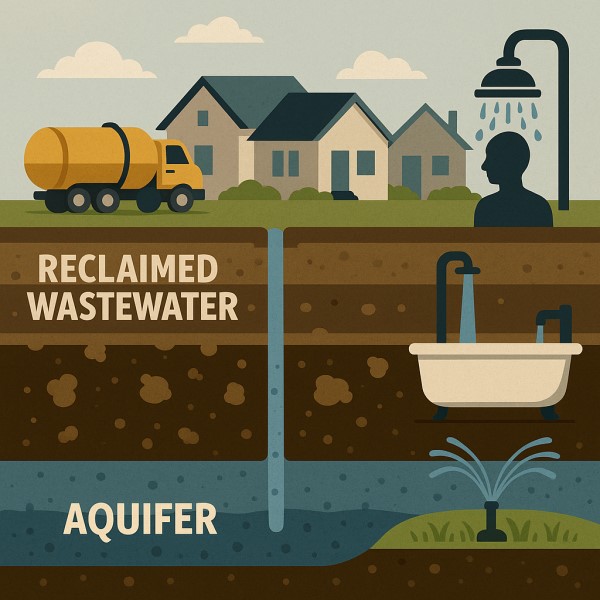Inside HB 2753: The Effluent Injection Bill That’s Putting Our Aquifers at Risk
🚨 From Toilet to Tap: The New Water Supply They Don’t Want You Asking About
Arizona lawmakers passed House Bill 2753 to make it legal to inject treated sewage water back into underground aquifers. The claim? That it's “safe,” “sustainable,” and “the only way forward” for growth in dry counties like Pinal.
But let’s call it what it is:
💩 Toilet-to-Tap — without your consent.
HB 2753 greenlit the recharge of Class A+ effluent (treated sewer water) directly into the same aquifers our families rely on for drinking water — including wells across San Tan Valley, Florence, and surrounding unincorporated areas.
👨⚖️ Who’s Behind HB 2753?
Follow the money and you’ll find:
-
Developers who needed a legal workaround to get their projects approved in water-scarce desert land.
-
Lobbyists from the Rose Law Group, pushing for policy changes to benefit their big-builder clients.
-
Politicians in Maricopa and Pinal counties who either sponsored or silently backed the bill under pressure from donors.
Why?
Because under Arizona law, builders must prove a 100-year water supply to get subdivisions approved. But there isn’t enough real water left. So instead, they invented a legal fiction:
“We’ll inject effluent into the aquifer — and call it a water supply.”
🧫 Is It Safe?
The short answer? Not really.
According to the CDC, reclaimed wastewater has been found to carry MRSA, drug-resistant staph, and antibiotic resistance genes — even after treatment.
-
🦠 “Antibiotic resistance is one of the biggest public health challenges of our time… and environmental transmission is a key driver.”
— CDC.gov -
💉 A 2021 NIH study found resistant bacteria persist in treated water and can regrow during storage and distribution — like inside underground aquifer recharge systems.
Let that sink in:
They are injecting water that still contains remnants of fecal bacteria, viruses, and synthetic chemicals into the same groundwater our wells draw from.
And you probably weren’t even told.
🏘 Why This Is Happening in Pinal County
Pinal is the test site for this water experiment because:
-
We’re not incorporated — no city council, no water district to fight back
-
Home values are lower, meaning less political resistance
-
The land is open, but the water is gone — unless they manufacture supply on paper
That’s where HB 2753 comes in:
It gives developers and their lawyers the green light to build on paper water — using sewage-treated recharge zones to qualify for subdivision approvals.
They claim it’s science.
But it’s really just policy + marketing + lobbyist cash.
🧨 What This Means for You
| Impact | How It Affects You |
|---|---|
| Your well could be pulling up injected effluent | If recharge basins are built nearby, that’s a real risk. |
| You were never asked to vote on this | HB 2753 passed quietly — no local opt-out, no referendum. |
| Your kids are playing in parks already sprayed with this | And soon, they may be drinking it. |
| Developers get rich — you get poisoned | The water isn't for your benefit — it’s to legalize 1 million new homes. |
🛡 What Can You Do?
-
📣 Demand your HOA disclose their irrigation source — they must tell you if reclaimed water is used.
-
📝 Demand a well testing requirement near recharge sites — currently, there’s no mandate.
-
⚖️ Challenge local aquifer recharge permits at ADEQ hearings — public comment is open during rulemaking.
-
📡 Share this article with your neighbors and water board contacts — this won’t be on the front page of Pinal Central.
